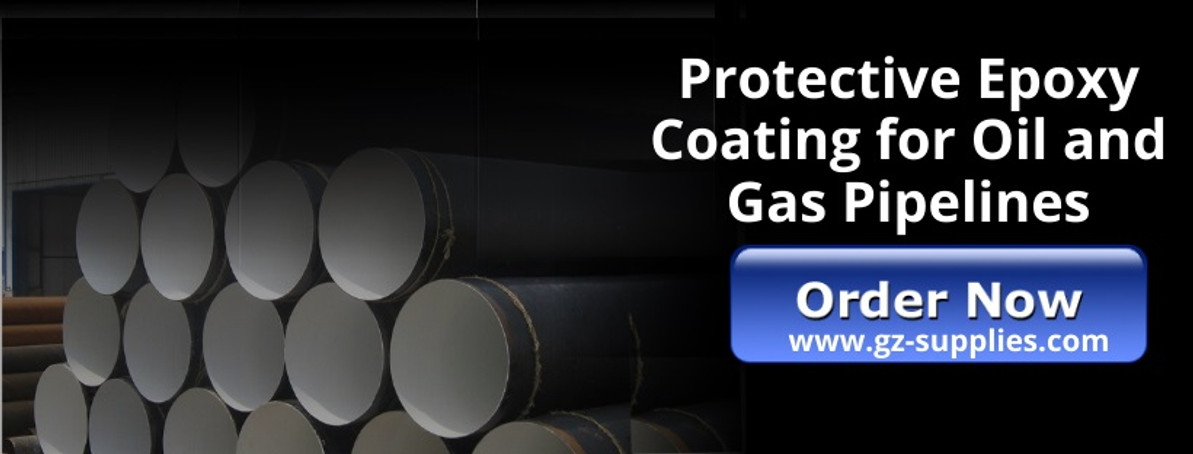PROTECTIVE EPOXY COATINGS FOR OIL AND GAS PIPELINES
PROTECTIVE EPOXY COATINGS FOR OIL AND GAS PIPELINES
Oil and gas pipelines are an essential part of the energy infrastructure and their coatings must meet a multitude of standards which includes;
- preserving the equipment
- protection from corrosion,
- follows federal regulations
- Quick to apply for fast-moving pipeline owners
Pipeline coatings should be inspected both visually and by a holiday detector set at the proper voltage before the pipe is lowered into the water. Periodic inspection of the pipeline cathodic protection potential is used to identify the coating breakdown areas.
Coatings are selected based on the design temperature and cost. The principal coatings in rough order of cost are:
There are three major types of pipeline location:
- Above-ground pump stations
- Below-ground buried systems
- Underwater pipelines

ABOVE GROUND PUMP STATIONS
For the above-ground pump stations and compressor stations where pressure is reintroduced into the pipeline to maintain flow, pipeline coatings that protect against atmospheric conditions (wind, rain, UV, infrared) are the standard. This is typically an inorganic zinc primer, an intermediate coat of epoxy, then a top coat of polyurethane for color and gloss retention. Joint coatings are field-applied with the same coating system as the body of the pipeline. Cathodic protection isn’t used on the above-ground sections of the pipeline.
BELOW-GROUND BURIED SYSTEM
For buried systems, almost-universal standard pipeline coating is fusion bond epoxy (FBE) powder systems. FBE has become the standard because it is easy to apply, affordable, works well with cathodic protection and is tough enough to withstand transportation from the shop, to the truck and field. A section at each end of the pipe is left for the field-applied joint coatings; either a three-layer shrink wrap, or a high-performance 100 percent solid liquid-applied epoxy. The drawback of the epoxy is the cure time, which is not ideal for fast-moving pipeline projects.
As buried systems are in an immersive environment (i.e. surrounded by water), cathodic protection is a must, and is always used in conjunction with the FBE (Fusion Bond Epoxy) system. The coating system and the cathodic protection have a synergistic relationship, as the coating deteriorates with age and develops holidays, the cathodic protection takes over and ensures continued corrosion protection for the pipeline.
Cathodically protected pipelines are equipped with permanent test stations, where electronic leads are attached to the pipeline to measure the pipe-to-soil potential. This potential should be sufficiently cathodic to ensure adequate corrosion protection, but not so cathodic as to produce coating damage and or hydrogen embrittlement.
UNDERWATER PIPELINES
Though seemingly different from buried pipeline systems, underwater pipelines are actually in quite a similar environment, as they are both immersive. These pipelines are either pre-coated with three layers of FBE, or applied with coal tar urethane on site. The choice between these two is based on the personal preference of the pipeline owner, though coal tar urethane’s health and safety concerns have seen it fall out of favor in recent years.
As with buried pipelines, underwater pipeline coatings are used in conjunction with sacrificial cathodic protection. One additional element that’s added to underwater pipelines is concrete weight coatings; some poured and laid on-site, some pre-cast to ensure the pipeline stays at the desired depth and does not float out of the water.
Contact GZ Industrial supplies for quality Oil and Gas coatings and coating materials, we have all Industrial product in stock all over Nigeria.
Recent Posts
-
The Ultimate Guide to Understanding the Difference Between Ethylene Glycol and Propylene Glycol
Introduction Glycols are versatile compounds widely used across various industries, from automotive …Apr 16, 2025 -
What are Agricultural Machinery
Introduction Agricultural Machinery is also used to improve the wide range of production prac …Apr 14, 2025 -
The Best Electrical Wire in Nigeria 2025 (Updated)
Introduction Electrical wires are the basic unit of every electrical system. Electrical wires …Apr 14, 2025




